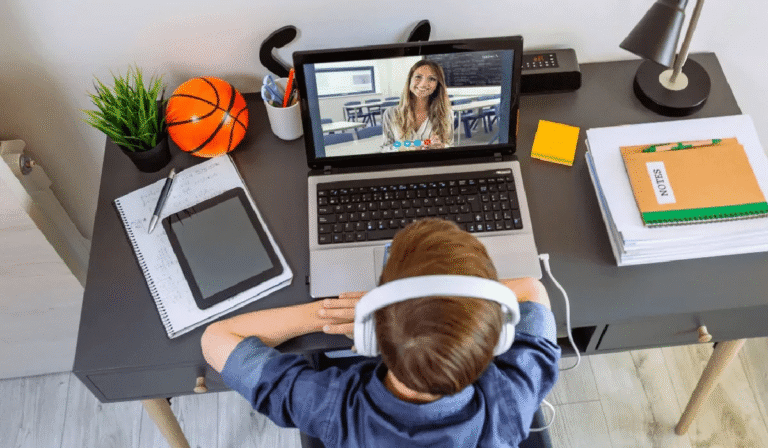
Introduction
Have you ever experienced the world in a way that felt different from everyone else around you? Do certain numbers or letters have distinct colors? Or perhaps you feel physical sensations when watching others touch things? These are just some of the fascinating symptoms of synesthesia—a condition where stimulation of one sensory pathway leads to involuntary experiences in another. If you’re curious about whether you might have synesthesia, this article will guide you through different types of synesthesia tests, including the calendar synesthesia test, mirror-touch synesthesia test, grapheme-color synesthesia test, and even free tests that can help you explore your own sensory perceptions.
What is Synesthesia?
Synesthesia is a rare neurological phenomenon where the stimulation of one sense triggers an automatic, involuntary experience in another. For example, people with grapheme-color synesthesia might see colors when they look at numbers or letters, while those with mirror-touch synesthesia might feel physical sensations in their bodies when they see someone else being touched.
The condition is unique to each individual, and experiences can vary widely from person to person. The good news is that there are now several synesthesia tests available, both online and in clinical settings, that can help identify this condition.
Calendar Synesthesia Test: What Does a Date Feel Like?
Calendar Synesthesia Test, also known as time-space synesthesia, is when individuals associate days, months, or even years with a color or spatial arrangement. For example, some people may “see” the months of the year as forming a circular pattern, with January in the top left and December at the bottom.
How to Test for Calendar Synesthesia:
- Step 1: Use a calendar template that’s blank, or a digital calendar without any colors.
- Step 2: Close your eyes and try to visualize a calendar. Does it appear in colors, or do certain months feel like they belong to specific parts of your space?
- Step 3: If you experience these spatial or color associations with time, you might have calendar synesthesia.
Many people with this form of synesthesia can pinpoint the months or dates with vivid visual representations, making it an interesting and personalized form of the condition.
Mirror-Touch Synesthesia Test: Feeling What Others Feel
Mirror-touch synesthesia is when a person experiences physical sensations, like touch, on their own body simply by observing someone else being touched. For example, if you watch a video of someone brushing their arm, you might feel that same sensation in your own arm.
How to Test for Mirror-Touch Synesthesia:
- Step 1: Watch a video or look at images of people engaging in touch—like shaking hands, hugging, or having their arm touched.
- Step 2: Focus on your body’s reactions. Do you feel a sensation in the same part of your body when watching the touch happen?
- Step 3: If you experience those sensations, even without physical contact, you may have mirror-touch synesthesia.
This form is particularly fascinating because it reflects an increased level of empathy and could provide insight into how the brain processes emotional connections.
Synesthesia Test Free: Try it Yourself
You might be curious to see if you have synesthesia but not want to spend any money on a test. Fortunately, there are several free synesthesia tests available online that can provide a good indication of whether you experience the world in a synesthetic way.
Free Synesthesia Tests:
- The Synesthesia Battery: This test offers a set of questions and tasks that assess various forms of synesthesia, including grapheme-color synesthesia, sound-color synesthesia, and more.
- Online Color Association Test: Some websites provide tests where you’ll be asked to match letters, numbers, or sounds to colors. If you find yourself making consistent color associations, you might have synesthesia.
- Synesthesia Quiz: Available on some neuroscience sites, these quizzes can help you determine whether your perceptions align with common forms of synesthesia.
These free tests won’t provide a clinical diagnosis but can help you understand if you’re experiencing something outside the typical sensory experience.
Mirror-Touch Synesthesia Test (Extended): Do You Feel What Others Feel?
As mentioned earlier, mirror-touch synesthesia is one of the more remarkable forms of synesthesia, where the act of seeing someone else being touched triggers physical sensations in your own body. This phenomenon is often accompanied by a heightened sense of empathy and awareness.
To take a deeper dive into mirror-touch synesthesia:
- Step 1: Engage in social scenarios where physical touch occurs, such as watching friends hug or people shake hands.
- Step 2: Reflect on your feelings during the interaction. Do you feel the sensation of touch on your skin as if it were happening to you?
- Step 3: Pay attention to the intensity and frequency of these sensations. Do they happen every time, or only occasionally?
For some people with mirror-touch synesthesia, the physical sensation can range from a mild tingle to a full, vivid touch experience. Understanding this type of synesthesia can help you connect better with those who have heightened empathy.
Grapheme-Color Synesthesia Test: What Color is Your Alphabet?
Perhaps one of the most common forms of synesthesia is grapheme-color synesthesia, where letters and numbers are automatically associated with specific colors. A person with this condition might see the letter “A” as red or the number “4” as blue.
How to Test for Grapheme-Color Synesthesia:
- Step 1: View a random set of numbers or letters. Do they appear to have inherent colors in your mind?
- Step 2: Try to write out a list of the alphabet or numbers. Do certain letters or digits consistently correspond with specific colors?
- Step 3: If your mind automatically associates colors with these symbols, then you may have grapheme-color synesthesia.
Some people with grapheme-color synesthesia have detailed, vibrant experiences where the colors are not only seen in their minds but may even appear in the physical world, adding a unique twist to their daily experiences.
How Accurate Are Synesthesia Tests?
While online synesthesia tests can be a fun and insightful way to explore your sensory perceptions, they are not always scientifically rigorous. Clinical assessments, such as those conducted by neurologists or psychologists, are more accurate for diagnosis, but they may require more involved testing.
These tests can give you an idea of whether you have synesthesia, but a formal diagnosis is necessary if you want to better understand your condition. If you think you may have synesthesia, it’s always a good idea to consult with a healthcare professional.
Conclusion: Exploring the World of Synesthesia
Synesthesia offers a unique perspective on the human sensory experience, and it can be exciting to explore whether you might have this fascinating condition. Whether you’ve taken the calendar synesthesia test, the mirror-touch synesthesia test, or the grapheme-color synesthesia test, understanding your unique sensory world can provide a deeper appreciation for how you perceive reality.






